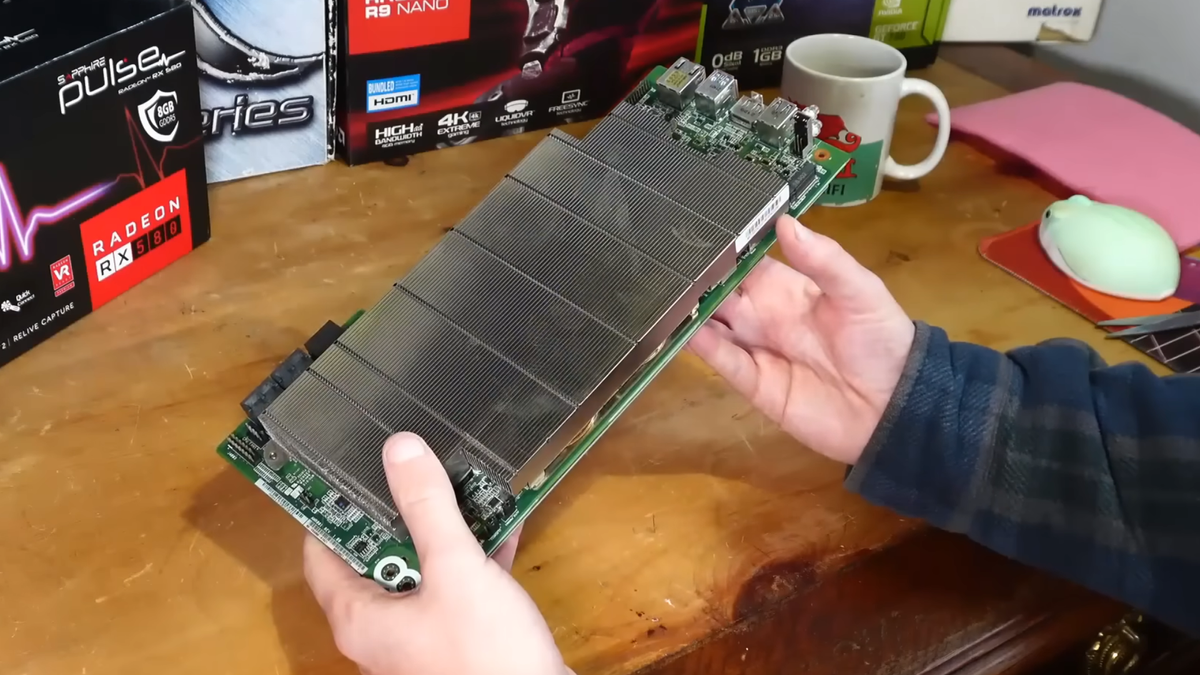
Best MacBook for creators
The MacBook Pro M3 Max is nothing short of a desktop-class laptop with a stunning display capable of outputting a 120Hz refresh and 1,600 nits of peak brightness. Simply put, this laptop is an elegant beast, and our number one pick.
With the recent release of the M4 processor, Apple's sprawling lineup of laptops is harder than ever to differentiate. Luckily, we've gone hands-on with all of Apple's latest MacBooks, from the light and portable MacBook Air to the powerhouse MacBook Pro. Taking into account memory, portability, features and value, we broke down the pros, cons, and ideal use cases across Apple's laptops.
Informed by a combination of benchmarking programs, performance testing, and everyday use, we tested Apple's latest MacBooks to measure battery life, visual quality, performance, and practical use in everyday settings.
What's the best MacBook right now?
The 15-inch MacBook Air M4 is the best all-around laptop for the majority of users. The 15-inch display is just the right size, it's lightweight enough to commute with, and the upgraded M4 Air processor is fast and battery-efficient. The best part? The M4 MacBook Air comes with more memory for less, with a 10-core CPU on the low end and a 32GB configuration on the high end. This amount of memory was previously unavailable on a MacBook Air, but now, the laptop that set the standard for ultraportables is more powerful than ever.
Also: The best laptops you can buy
Before Apple announced the MacBook Air M4 in early 2025, rumors abounded on what new features it would come with. As the last of Apple's core line of devices to get the latest M4 chip, the MacBook Air is an incremental upgrade to the M3, more of a refinement and improvement than an earth-shattering new release.
And that's a good thing. The 15-inch MacBook Air M4 is our pick for the best all-around MacBook for the majority of users for its versatility, lightweight form factor, and powerful suite of features. The 15-inch display is just the right size to be portable yet still feel premium and spacious, and now supports two external monitors while the lid is open.
Review: Apple MacBook Air M4 (15-inch) review
During my testing of the M4, I got over 14 hours of battery life with the device running a 4K video at half brightness, which is about where I expected it to be and about the same as last year's MacBook Air M3. That translates to a full day at the office, even with video calls. And speaking of, they look great with the crisp and clear 12MP Center Stage webcam with 1080p HD video recording.
Basically, if you are unsure what kind of MacBook to get, we recommend this one. Unless you need to push the limits of performance with a premium processor, the MacBook Air M4 is a capable MacBook for everyone, especially since the upgraded unified memory makes it look a little more like a MacBook Pro.
MacBook Air M4 (15-inch) specs: Display size: 15.3-inch | Display type: Liquid Retina XDR | Resolution: 2880 x 1864 pixels | Unified Memory: 16GB-32GB | Storage: Up to 2TB | CPU: 10-core M4 | Battery life: Up to 18 hours
Read More
Show Expert Take Show less
The MacBook Pro M4 meets the needs of most users, but is particularly well-suited for creatives looking for a powerful laptop for photo and video editing. Yes, technically, the higher-tier M4 Pro and M4 Max chipsets have even more power under the hood for demanding workflows, but we want to call out the base-level MacBook Pro M4 because of how well balanced and capable it is for the vast majority of creative projects relative to price.
Whether for photo editing, video work, or light gaming, the M4 handled everything smoothly in our testing, even outperforming the old M1 Pro chip. Additionally, starting with 16GB of unified memory and going up to 24GB, the MacBook Pro M4 still has the power behind it to push that performance to the next level.
Review: MacBook Pro (M4)
Besides the raw power, however, a handful of quality-of-life features go a long way toward its practicality. The M4 MacBook Pro has three USB-C Thunderbolt 4 ports, with one on the right side of the laptop. Also, the new processor allows the computer to extend up to two monitors while the lid is open. Previously, you'd have to close the MacBook lid to power two external monitors.
Lastly, the display looks great as ever, with the new brightness rating -- 1,000 nits at SDR and 1,600 nits at HDR -- paired with the optional, expensive (but so satisfying) nano-texture coating makes this one of the best-looking laptop displays I've used. The matte-frosted layering significantly reduces glare, while the brighter panel just manages to beat out bright light sources.
MacBook Pro M4 specs: Display size: 14-inch | Display type: Liquid Retina XDR with nano-texture glass | Resolution: 3024 x 1964 pixels | Unified Memory: 16GB-24GB | Storage: Up to 1TB | CPU: 10-core M4 | Battery life: Up to 24 hours
Read More
Show Expert Take Show less
If you're looking for a MacBook designed with professional creators in mind and can handle top-tier gaming, the MacBook Pro with the M4 Pro chip brings a whole new level of performance to the series.
We're talking a 14-core CPU and 20-core GPU with up to 48GB of unified memory and a brilliant 16-inch Liquid Retina XDR display. When it comes to on-device AI, the M4 Pro features a 16-core neural engine for powering fast and efficient local AI tasks, which are plenty in the latest macOS.
Also: I swapped my Windows laptop for a MacBook Air M4, and finally understand the hype
Connectivity is also a huge step up from the base MacBook Pro with three Thunderbolt 5 ports, an HDMI port, SDXC card slot, headphone jack, and MagSafe 3 port -- all quality of life features that creatives working across multiple mediums will appreciate.
But it's not just all about processor performance. Video and audio are studio-quality with the M4 Pro, with ProMotion technology for adaptive refresh rates up to 120Hz and a high-fidelity six-speaker sound system with woofers to elevate the gaming and entertainment experience.
MacBook Pro with M4 Pro (16-inch) specs: Display size: 16-inch | Display type: Liquid Retina XDR Display | Resolution: 3456 x 2234 pixels (Full HD+) | Unified Memory: 24-48GB | Storage: Up to 4TB | CPU: 14-core M4 Pro | GPU: 20-core M4 Pro | Battery life: Up to 18 hours
Read More
Show Expert Take Show less
With every new year of MacBook upgrades, it's easy to write off previous versions as obsolete. But the truth is that models from two, three, or more years ago are still highly competitive machines in 2025. Case in point: the MacBook Air M2 from 2022 is a powerful laptop in its own right, but quite a bit more affordable now that the M4 is on shelves.
If you're looking for a new MacBook but want to save some money, this is a great option. The configuration with 8GB of unified memory and 256GB of storage starts at $749 at Best Buy right now, which is half the cost of a new MacBook Air M4 while retaining many of the same features.
Review: MacBook Air M2
For example, the 13-inch MacBook Air M2 is just as ultraportable and lightweight, with fantastic battery life and access to the latest Apple Intelligence features in macOS. Even though it doesn't have the Center Stage camera that automatically centers you in the screen, the webcam in the M2 still looks great. It's a 1080p FaceTime HD camera with a three-mic array and a four-speaker sound system with Spatial Audio for an enjoyable video calling experience.
MacBook Air M2 (13-inch) specs: Display size: 13.6-inch | Display type: Retina Display | Resolution: 2560 x 1664 pixels | Unified Memory: 8GB | Storage: 256GB | CPU: 8-core M2 | Battery life: Up to 17 hours
Read More
Show Expert Take Show less
When it first came out in 2024, we called the MacBook Air M3 Apple's AI computer for the masses, noting it as the successful culmination of Apple's thin and light lineup, while still being pro enough for most users. Today, all of that remains true, even with the MacBook Air M4 in the game.
The 13-inch M3 is differentiated from the newer version by a few key features, namely the M4's ability to support two external monitors with the lid open, a 10-core CPU (as opposed to the 8-core on the M3), the option for more memory, and a slightly better webcam, but that's where most of the similarities end.
Review: MacBook Air M3 (13-inch)
The M3 is comparable in power, performance, and battery life, with a price that often dips well below the $1,000 mark, especially when on sale. For a work laptop, the M3 MacBook Air is well-positioned to handle daily tasks with an all-day battery, 16-core neural engine, and best of all: the thin and light form factor that set the bar for ultraportables.
If the horsepower behind a $2,000+ MacBook Pro is overkill, we suggest springing for the M3 MacBook Air as a work laptop that's more than capable, especially for hybrid commuters who don't want to tote around a bulky device.
MacBook Air M3 (13-inch) specs: Display size: 13.6-inch | Display type: Liquid Retina Display | Resolution: 2560 x 1664 pixels | Unified Memory: 8-24GB | Storage: 256GB | CPU: 8-core M3 | Battery life: Up to 18 hours
Read More
Show Expert Take Show less
What are the tariffs in the US?
The recent US tariffs on imports from countries like China, Vietnam, and India aim to boost domestic manufacturing but are likely to drive up prices on consumer electronics. Products like smartphones, laptops, and TVs may become more expensive as companies rethink global supply chains and weigh the cost of shifting production.
Also: Tariff war has tech buyers wondering what's next. Here's what we know
Laptops and PCs are also hit hard by the new U.S. tariffs, with import duties potentially increasing prices by up to 35%. Many major brands still rely on Chinese and Vietnamese factories for assembly, meaning consumers could soon pay significantly more for everything from budget Chromebooks to high-end gaming rigs.
These tariffs may accelerate efforts to move production to regions like Mexico or India, but shoppers can expect higher costs and fewer discounts in the short term.
Right now, it looks like some tech may be exempt from the issued tariffs, but since it's always changing and developing, we are keeping an eye on it and will update you on the latest.
Also: Tariff exemptions for electronics offer a break for tech - but not for long
ZDNET's top pick for the best MacBook is the 15-inch Air M4, sporting the latest in Apple Silicon chip technology, a gorgeous display, great battery life, and more memory for a lower starting price. We think it's the best MacBook for most users, but there are both more powerful and more budget-friendly MacBooks out there.
This chart breaks down how the MacBooks stack up with the top features, from price to CPU/GPU, screen size, and display resolution.
Best MacBook | Starting price | CPU/GPU | Memory/Storage |
MacBook Air M4 (15-inch) | $1,169 | 10-core CPU, 10-core GPU | Up to 32GB, up to 2TB |
MacBook Pro M4 (14-inch) | $1,449 | 10-core CPU, 10-core GPU | Up to 32GB, up to 2TB |
MacBook Pro M4 Pro (16-inch) | $2,499 | 14-core CPU, 20-core GPU | Up to 48GB, up to 4TB |
MacBook Air M2 (13-inch) | $889 | 8-core CPU, 10-core GPU | Up to 24GB, up to 1TB |
MacBook Air M3 (13-inch) | $1,099 | 8-core CPU, 10-core GPU | Up to 24GB, up to 2TB |
We get it, once you start looking at all the different MacBooks side by side, it can get a little confusing. If you're looking for an all-around solid MacBook that can do a bit of everything, we think the MacBook Air M4 (15-inch) is your best bet, but there are other options that might be better for you personally.
Here's a well-researched (and tested) list of our favorite MacBooks for the most common use cases.
Choose this MacBook… | If you want… |
MacBook Air M4 (15-inch) | The newest MacBook Air that's powerful enough for work and play, with a middle-ground 15-inch size. |
MacBook Pro M4 (14-inch) | A more powerful MacBook with the latest M4 processor with more memory, but don't want to spend $2,500 or more on the top-tier configuration. |
MacBook Pro M4 Pro (16-inch) | One of the most powerful MacBooks you can buy, with powerful hardware and a large Liquid Retina XDR display that supports ray tracing. |
MacBook Air M2 (13-inch) | A thin and light 13-inch MacBook without breaking the bank. |
MacBook Air M3 (13-inch) | A powerful but ultraportable laptop for work. |
We use a combination of methods to test laptops here at ZDNET. First, we acquire data from benchmarking software to analyze a system's metrics under the hood and compare those to advertised numbers. Then, we spend an extended amount of time with the laptop -- usually a week or two -- using it the same way a normal consumer would, to assess its portability, form factor, and how well the battery actually holds up. For an extensive breakdown, check out our comprehensive laptop testing methodology.
- Benchmarking: First, we run a series of tests to put the computer's hardware through the wringer in order to see what it's capable of. Cinebench is one of the most commonly used hardware testing suites, which tests the laptop's rendering performance on single and multiple central processing unit (CPU) cores. PCMark 10 is another powerful program that covers a wide variety of tasks performed in the workplace, and there are many others that we use in tandem to gather as much data as we can. Some components we run tests on include:
- Processor: The "brain" of the laptop and one of the most important factors that determines performance. The four biggest manufacturers that make most of the CPUs found in laptops today are Intel, AMD, Qualcomm, and Apple -- in Apple machines only. This is tested in benchmarking software.
- The display: The size of the display -- measured diagonally from corner to corner -- is also what dictates the laptop's overall size and plays a big role in the device's cost. Brightness is measured in "nits," and color spectrums are tested in benchmarking software.
- The graphics processor (GPU): Whether it's integrated into the CPU or a dedicated graphics card, how well the machine handles graphics is a key factor when it comes to demanding tasks like video editing, rendering, and of course, gaming. We test the GPU with a combination of benchmarking software, gaming, and media playback.
- Physical form factor: Finally, the laptop's overall appearance and physical form factor encompasses its weight, thickness, how the keyboard and trackpad feel, and whether it has a display that can be folded back to form a tablet. We carry the laptop around for at least a week and note how well it commutes.
- Battery testing: We test a unit's battery in a few ways. A handful of benchmarking programs have their own battery testing components, but we will also just let the laptop run for as long as it can under a medium load. We ensure screensavers and hibernation mode are turned off, set the display's brightness and audio at 50%, load up a livestream on YouTube in Chrome, and wait 'til the end.
- The human element: As we mentioned earlier, metrics and system data are important, but numbers alone don't give you the full picture. This is where we weave in our personal experience with the device and tap into the practical use cases that consumers actually care about.
Ultimately, our goal is to break down the capabilities of each and every laptop we test into digestible terms that real people find useful. There is a lot of noise and confusion when it comes to navigating the laptop and computer consumer market, so we hope to bring an intuitive element to the whole process by leveraging our team's decades of experience.
Even though MacBooks might look pretty similar on the surface, there are some big differences between them. The best one for you depends on what you plan on using it for. Do you want something thin and light for traveling to work, or do you need substantial RAM and storage for demanding workloads? Here are some key considerations.
- Portability: The MacBook Air lineup features the thinnest and lightest MacBooks. Obviously, the 13-inch MacBook Air is thinner and lighter than the 15-inch Air, but the small size might be too much of a trade-off. If you end up plugging the laptop into an external monitor anyway, the small-sized 13-inch laptop might make little difference.
- Performance: Apple's Silicon processors start at the base level M2, M3, or M4, then move up to the Pro, then at the top of the performance chart are the Max chips. Each subsequent generation is slightly more powerful than the previous, but the differences between the M3 and M4, for example, are not earth-shattering.
- Storage and RAM: The more unified memory your MacBook has, the better equipped it is at performing complex tasks. The MacBook Air M4 is now offered with 32GB of memory, an upgrade from previous versions, which capped out at 24GB. MacBook Pro devices scale to much higher memory options, but you will quickly see the price inflate.
- Purpose: We broke down the five best MacBooks for the most common use-cases, and are confident one of them would be right for you. If you're unsure about which one applies, the 15-inch MacBook Air M4 is the best all-around MacBook that the majority of users will love.
- Value: The best laptop can be a pricey investment, so we considered qualities that assure you'll get your money's worth. The older MacBooks, particularly M2 and earlier, are often heavily discounted, despite still being competitive machines in 2025.
While Apple's iMac, Mac Mini, and Mac Studio desktops have their fair share of fans, MacBooks outsell all of those devices combined thanks to the broad selection of sizes, use cases, and just how enjoyable they are to use.
With the latest M4 MacBook Air and MacBook Pro, you can still connect to two external monitors with the laptop's display open, promoting a desktop-style user experience, anyway (earlier versions just require you to close the lid for two displays).
While you can run less demanding games on a MacBook Air, we recommend opting for a MacBook Pro if you're into more serious titles. The additional processing power combined with more GPU cores, support for ray tracing, and better cooling mean you're going to have a much better experience. The M4 MacBook Pro is a surprisingly good gaming laptop in 2025, even though Apple computers have notoriously been second-choice machines for gamers.
It really depends on the student, but there are some common factors to consider when shopping for a laptop for school. You'll want something small and lightweight for easier commutes to and from school and between classes.
Also: The best laptops for college: Expert tested
You'll also want something with at least eight hours of battery life to get through a typical school day without needing to plug in. This is excellent for younger kids who may be forgetful and leave their charging cable at home. The MacBook Air M3 is one of the best all-around laptops for school, but the 13-inch MacBook Air M2 is a smart option as well for a very approachable price.
Whether you're looking for a single laptop for yourself or a fleet for your business, the best MacBooks for work offer great performance, multiple connectivity options, and durable builds.
You'll probably want a MacBook with at least 16GB of RAM, a 512GB storage drive, and a display large enough to work on without being too bulky to travel with. You'll also want a model with at least eight hours of battery life to get through a typical day of work without needing to recharge constantly.
The MacBook Pro M4 is a fantastic device for work, but if you want something light and portable, we recommend the 13-inch MacBook Air M3, which is light and easy to carry, but performs well when connected to external monitors.
We strongly recommend getting an M4 MacBook and purchasing Final Cut Pro, an editing software exclusive to the Mac ecosystem. Buying the MacBook M3 Max is another good option if you want some serious raw power. It sports an M3 Max chip and offers great performance for content creators, while seeing a bit of a reduced price since the release of the M4. The machine can also handle 4TB of footage with ease, and sports additional I/O.
Other laptops we've tested
Laptops Reviewed & Compared

 6 months ago
68
6 months ago
68








 English (US) ·
English (US) ·